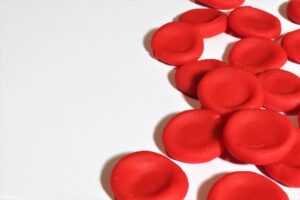Anemia is a condition that affects millions of people worldwide, yet it is often overlooked and underestimated. It occurs when your body doesn’t have enough red blood cells to carry oxygen to your tissues, causing weakness, fatigue, and other health complications. If you’re struggling with anemia, you know how frustrating and debilitating it can be. But don’t worry, there are effective strategies for raising hemoglobin levels and saying goodbye to anemia for good. In this article, we’ll explore some of the most effective ways to increase your hemoglobin levels, including dietary changes, lifestyle modifications, and supplements. By implementing these strategies into your daily routine, you can improve your overall health and wellbeing, and finally break free from the cycle of anemia. So, let’s get started and learn how to say goodbye to anemia once and for all!
Understanding Anemia – Causes, Types, and Symptoms
Anemia has several underlying causes, including iron-deficiency, vitamin B12 deficiency, and chronic diseases. Iron-deficiency anemia is the most common type of anemia and is caused by a lack of iron in the body. Vitamin B12 deficiency anemia is caused by a lack of vitamin B12, which is necessary for the production of red blood cells. Chronic diseases such as cancer and kidney disease can also lead to anemia.
The symptoms of anemia include fatigue, weakness, shortness of breath, dizziness, and pale skin. If you experience any of these symptoms, it is essential to consult a doctor for proper diagnosis and treatment. Anemia can be diagnosed through a blood test called a complete blood count (CBC), which measures the number of red blood cells, hemoglobin, and other components in the blood.
It is essential to understand the cause of your anemia to determine the best course of treatment. Once diagnosed, your doctor will recommend appropriate treatment based on the underlying cause of your anemia.
The Role of Hemoglobin in the Body
Hemoglobin is a protein found in red blood cells that carries oxygen from the lungs to the tissues in the body. It is responsible for the red color of blood and is essential for maintaining healthy bodily functions. Hemoglobin is made up of four protein molecules (globulin chains) and four heme molecules, which contain iron. The iron in heme binds with oxygen in the lungs and releases it in the tissues, providing energy and nourishment to the body.
Low hemoglobin levels can lead to anemia and cause a range of symptoms, including fatigue, weakness, and shortness of breath. It is vital to maintain healthy hemoglobin levels to ensure that your body functions properly.
Hemoglobin Levels – What is Normal?
Hemoglobin levels vary depending on age, sex, and other factors. In general, the normal range for hemoglobin levels in adult men is 13.5 to 17.5 grams per deciliter (g/dL) and in adult women is 12.0 to 15.5 g/dL. However, the normal range may differ depending on the individual’s health condition, age, and other factors.
It is essential to maintain healthy hemoglobin levels to ensure that your body functions properly. If your hemoglobin levels are low, your doctor may recommend appropriate treatment based on the underlying cause of your anemia.
Consequences of Low Hemoglobin Levels
Low hemoglobin levels can lead to anemia, which can cause a range of symptoms, including fatigue, weakness, shortness of breath, and pale skin. Anemia can also make you feel dizzy, lightheaded, and increase your heart rate. In severe cases, anemia can lead to heart failure, which can be life-threatening.
Low hemoglobin levels can also cause other complications, such as poor immune function, decreased cognitive function, and delayed wound healing. It is essential to maintain healthy hemoglobin levels to ensure that your body functions properly.
Foods That Boost Hemoglobin – Meat, Fish, and Poultry
Diet plays a significant role in maintaining healthy hemoglobin levels. Foods rich in iron, vitamin B12, and folic acid are essential for the production of red blood cells. Meat, fish, and poultry are some of the best sources of iron. Red meat, in particular, is an excellent source of heme iron, which is absorbed more efficiently by the body than non-heme iron found in plant-based foods.
Fish, especially salmon and tuna, are also good sources of heme iron. Poultry such as chicken and turkey are also rich in iron, making them excellent options for those looking to boost their hemoglobin levels.
It is essential to consume these foods in moderation as excessive intake can lead to other health complications such as heart disease and high cholesterol.
Plant-Based Sources of Hemoglobin – Leafy Greens, Beans, and Nuts
Plant-based foods are also excellent sources of hemoglobin. Leafy greens such as spinach, kale, and collard greens are rich in iron and folic acid, making them ideal for those looking to boost their hemoglobin levels.
Beans such as lentils, chickpeas, and soybeans are also rich in iron and are an excellent source of plant-based protein. Nuts such as almonds and cashews are also rich in iron and make for a healthy snack option.
It is essential to consume these foods in combination with vitamin C-rich foods such as citrus fruits, tomatoes, and bell peppers, which help increase iron absorption.
Iron Supplements – When and How to Take Them
Iron supplements are often recommended for those with iron-deficiency anemia. Iron supplements come in different forms, including tablets, capsules, and liquids. It is essential to take iron supplements as directed by your doctor as excessive intake can lead to other health complications such as constipation and stomach upset.
Iron supplements should be taken on an empty stomach or with vitamin C-rich foods to increase absorption. It is also important to avoid taking iron supplements with dairy products, coffee, and tea, as they can decrease iron absorption.
Lifestyle Changes to Increase Hemoglobin – Exercise and Sleep
Exercise and sleep also play an essential role in maintaining healthy hemoglobin levels. Regular exercise can help increase oxygen levels in the body and promote the production of red blood cells. Engaging in moderate exercise such as brisk walking, jogging, and cycling for at least 30 minutes a day can help increase your hemoglobin levels.
Adequate sleep is also essential for maintaining healthy hemoglobin levels. Lack of sleep can lead to fatigue, which can worsen anemia symptoms. It is recommended to get at least 7-8 hours of sleep per night to maintain healthy hemoglobin levels.
Medical Treatments for Anemia – Blood Transfusions and Erythropoietin
In severe cases, medical treatments such as blood transfusions and erythropoietin injections may be recommended. Blood transfusions involve receiving blood from a donor to increase hemoglobin levels. Erythropoietin injections stimulate the production of red blood cells and are often recommended for those with chronic kidney disease.
It is essential to discuss the potential risks and benefits of these treatments with your doctor before undergoing them.
Prevention of Anemia – Tips and Tricks
Prevention is the best way to avoid anemia. Maintaining a healthy diet rich in iron, vitamin B12, and folic acid, and engaging in regular exercise are essential for preventing anemia. It is also important to get regular check-ups with your doctor and treat any underlying health conditions promptly.
Conclusion – Living a Healthy Life without Anemia
In conclusion, anemia is a common condition that can be effectively managed with dietary changes, lifestyle modifications, and supplements. Maintaining healthy hemoglobin levels is essential for ensuring that your body functions properly and avoiding the symptoms of anemia. By incorporating these strategies into your daily routine, you can say goodbye to anemia for good and live a healthy life. Remember to consult with your doctor before making any significant changes to your diet or exercise routine.



